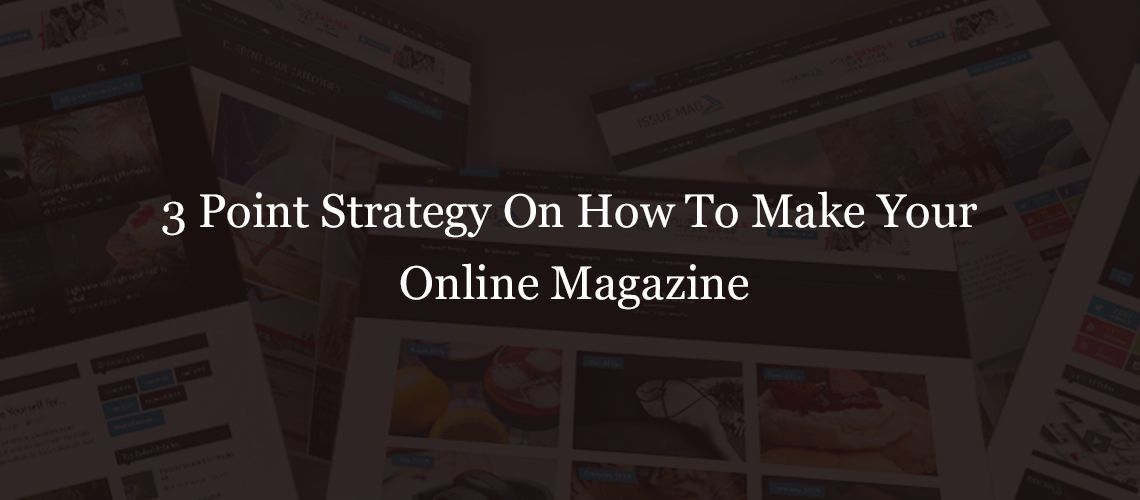Everything from shopping and booking a cab to course material and newspapers has gone online in this digital era. Technological advancements have increased the user’s expectations with people wanting everything, including a magazine, on their fingertips!
Are you the owner of a publishing house, big or small, which is struggling to retain customers with physical magazines? Do you have an online magazine site which sees less traffic and fewer readers? Are you struggling to retain subscribers to your magazine?
Use this three point strategy to create your online magazine issues which attracts readers and provides a stimulating user experience.
Creating quality content is the first step but it’s often not enough. Your magazine may be chockablock with useful information, but without an interactive, scannable, or visually appealing content, you will have fewer readers sticking around or reading your stuff.
This three point magazine publishing strategy guides you on the process of creating and developing a user-friendly magazine website.
1.Publish useful and relevant content
Once you decide to go online, the first building block is to decide what to publish! Content is the heart and soul of any magazine and adding relevant content in the right amount will help you win half the battle. Avoid producing mediocre content for the sake of publishing. Before you start creating posts, you need to ask yourself some essential questions.
Do you want to be considered an authority or expert in your industry or niche?
Do you want to be a trustworthy info base, by focusing on latest trends, news, curated resources and important updates?
Is your content competitive?
Does your content create emotional attachment and engages readers to it?
When you have one or more of these magazine objectives clearly spelled out, producing quality content that solves a problem, acts as a guide or motivates them to take required action, become easy. Competitive content which creates an emotional attachment helps attract and retains readers’ attention and trust. Along with quality, maintain a consistent tone and style in your content across the website.
2.Add attractive content elements for a visually appealing website
The digital generation has short attention spans and prefers bite sized, visually appealing content to a page filled with words. Reading large chunks of content without graphics or images makes the reader move to another site with similar information but visually appealing content.
Use a alluring, visually striking and easy to navigate WordPress magazine theme for your site to attract readers. A website that’s difficult to navigate will see higher bounce rates despite the abundance of quality content on the site.
As different readers have different needs and it is important to present right content to right people, creating categories and tagging articles in the right categories will help you to present relevant information to your readers.
You can increase your click through rates and keep customers on the site by varying content formats. Add eye-catching and relevant images to your posts, or create a video guide or tutorial and add it to your magazine post. Reach out to the mobile audience by embedding audios into your magazine post. Showcase key elements of a post in the form of simple but effective info graphics. Add a block quote to highlight an important point from the post.
As social media is a vital component of any post, add valuable resource links from social media into your post. Allow users to share the post on various social media platforms to attract new leads and audience for your website.
3.Publish periodically
You have nailed your content objectives, created relevant categories and attractive posts in different formats.
Should you hit publish, sit back and relax?
Is publishing a magazine issue a one-time job?
A dormant website is the best way to lose the audience list you’ve struggled to build. You need post magazine issues periodically like physical ones, based on a particular category, trends, or news updates. If you publish issues periodically, readers can differentiate between old and new content. They know where to what to read whenever they come back to your website. By publishing magazine issues at regular interval, your readers know exactly when new content is published and when to check for newer issues.
Depending on your site’s size and amount of posts, you can have weekly, monthly, bi-monthly, or quarterly issues. Use a spreadsheet to keep track of future issues and publish dates. Follow the dates and be consistent. If you don’t produce a new issue on time, you may lose your readers’ attention over time.
Follow this strategy when you next create your online magazine.
Are you magazine publisher with more insights on publishing magazines? Share your tips and thoughts in the comments.






